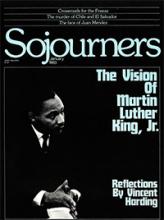After Nov. 2 no one, not even its opponents, could deny that the nuclear freeze campaign had become a genuinely grassroots and enormously popular social movement in this country. On that day 19 million Americans voted on the freeze, and 60 per cent of them voted in its favor. It was the closest thing to a national referendum the United States has ever had.
The freeze's victory was the result of a virtual "peace army" of volunteers who worked tirelessly at the local level taking petitions door to door.
Last Aug. 5, a freeze resolution missed passing in the House of Representatives by only two votes, an outcome that couldn't have been dreamed of just a year before. With the changes brought about by the fall congressional elections, a victory for the freeze is likely in the House as early as this spring.
Public sentiment against nuclear weapons continues to grow. Almost every day new organizations and constituencies are becoming involved in the struggle to stop the arms race. And the strongest constituency for peace is in the churches. In many Protestant denominations, peacemaking programs represent seeds of healthy new life. Many evangelical Christians are being converted by what the Bible says about peace. And Roman Catholic bishops have not only supported the freeze but are moving toward the adoption, in May, of a pastoral letter that goes beyond it.
The freeze's latest victory took place in the United Nations. On Nov. 23 the first committee of the General Assembly overwhelmingly passed a resolution in support of a comprehensive bilateral freeze between the U.S. and the Soviet Union. The measure, introduced by Mexico and Sweden, was heavily supported by the non-aligned and neutral nations.
Read the Full Article

